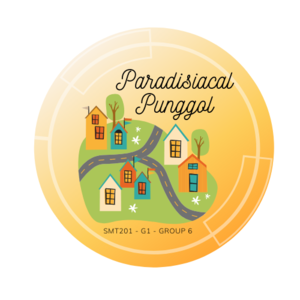Difference between revisions of "Analysis"
Jump to navigation
Jump to search
(Created page with "<br> <!------ Main Navigation Bar----> <center> {| style="background-color:#ffffff ; margin: 3px 10px 3px 10px; width="80%"| | style="font-family:Open Sans, Arial, sans-ser...") |
|||
| Line 29: | Line 29: | ||
{| style="background-color:#ffffff ; margin: 3px 10px 3px 10px; width="80%"| | {| style="background-color:#ffffff ; margin: 3px 10px 3px 10px; width="80%"| | ||
| − | + | ||
| − | + | == Population Growth Trend & Forecast == | |
In this population we will be using the Singstat’s `[https://www.singstat.gov.sg/-/media/files/find_data/population/statistical_tables/singapore-residents-by-planning-areasubzone-age-group-sex-and-type-of-dwelling-june-20112019.zip Singapore Residents by Planning AreaSubzone, Age Group, Sex and Type of Dwelling, June 2011-2019]` data provided. There are few objectives that we want to understand from the population historical data: | In this population we will be using the Singstat’s `[https://www.singstat.gov.sg/-/media/files/find_data/population/statistical_tables/singapore-residents-by-planning-areasubzone-age-group-sex-and-type-of-dwelling-june-20112019.zip Singapore Residents by Planning AreaSubzone, Age Group, Sex and Type of Dwelling, June 2011-2019]` data provided. There are few objectives that we want to understand from the population historical data: | ||
* Understand the population trend for each subzone and age group classification (younger group, economic active group, and aged population) in order to facilitate basic necessities for each age group. | * Understand the population trend for each subzone and age group classification (younger group, economic active group, and aged population) in order to facilitate basic necessities for each age group. | ||
| Line 39: | Line 39: | ||
*** Nyonyi, T and Mutongi, C. (2019). [https://mpra.ub.uni-muenchen.de/93983/1/MPRA_paper_93983.PDF Prediction of total population in Togo using ARIMA models]. | *** Nyonyi, T and Mutongi, C. (2019). [https://mpra.ub.uni-muenchen.de/93983/1/MPRA_paper_93983.PDF Prediction of total population in Togo using ARIMA models]. | ||
*** Lin, Bin-Shan, et al. [https://www.jstor.org/stable/23365635?seq=1#page_scan_tab_contents “Using ARIMA Models to Predict Prison Populations.”] Journal of Quantitative Criminology, vol. 2, no. 3, 1986, pp. 251–264. JSTOR, www.jstor.org/stable/23365635. | *** Lin, Bin-Shan, et al. [https://www.jstor.org/stable/23365635?seq=1#page_scan_tab_contents “Using ARIMA Models to Predict Prison Populations.”] Journal of Quantitative Criminology, vol. 2, no. 3, 1986, pp. 251–264. JSTOR, www.jstor.org/stable/23365635. | ||
| − | ** Make recommendations according to the population trend insights | + | ** Make recommendations according to the population trend insights. |
| + | |||
| + | |||
| + | === Data Cleaning Methods === | ||
| + | * Data is cleaned to only show Punggol PA and its subzones. | ||
| + | * Age group were classified into a new group with the following requirement: | ||
| + | ** '''Younger Population''': 0-24 | ||
| + | ** '''Economic Active''': 25-64 | ||
| + | ** '''Aged Population''': 65 and above | ||
| + | * Summation group by was performed according to each subzone and age group classification. | ||
| + | * Reverse data frame vector was performed to swap rows and columns formatting as it is required to perform graph visualisation in R. | ||
| + | ** Methods Deployed in RPubs: [http://rpubs.com/jerrytohvan/548619 Punggol Forecast Population Analysis] | ||
| + | ** Methods Deployed in RPubs: [http://rpubs.com/jerrytohvan/548621 Punggol Peak Hour Travel Pattern Analysis] | ||
| + | |||
| + | === Results === | ||
Revision as of 23:52, 16 November 2019
Population Growth Trend & Forecast
In this population we will be using the Singstat’s `Singapore Residents by Planning AreaSubzone, Age Group, Sex and Type of Dwelling, June 2011-2019` data provided. There are few objectives that we want to understand from the population historical data:
- Understand the population trend for each subzone and age group classification (younger group, economic active group, and aged population) in order to facilitate basic necessities for each age group.
- Forecast the future population trend up to 2024 using the auto ARIMA model to re-evaluate the MP19.
- Interpreting the Arima model
- Similar application of ARIMA model in forecasting population trends:
- Zakria, Muhammad & Muhammad, Faqir. (2009). Forecasting the population of Pakistan using ARIMA models.. Agri. Sci. 46.
- Nyonyi, T and Mutongi, C. (2019). Prediction of total population in Togo using ARIMA models.
- Lin, Bin-Shan, et al. “Using ARIMA Models to Predict Prison Populations.” Journal of Quantitative Criminology, vol. 2, no. 3, 1986, pp. 251–264. JSTOR, www.jstor.org/stable/23365635.
- Make recommendations according to the population trend insights.
Data Cleaning Methods
- Data is cleaned to only show Punggol PA and its subzones.
- Age group were classified into a new group with the following requirement:
- Younger Population: 0-24
- Economic Active: 25-64
- Aged Population: 65 and above
- Summation group by was performed according to each subzone and age group classification.
- Reverse data frame vector was performed to swap rows and columns formatting as it is required to perform graph visualisation in R.
- Methods Deployed in RPubs: Punggol Forecast Population Analysis
- Methods Deployed in RPubs: Punggol Peak Hour Travel Pattern Analysis
